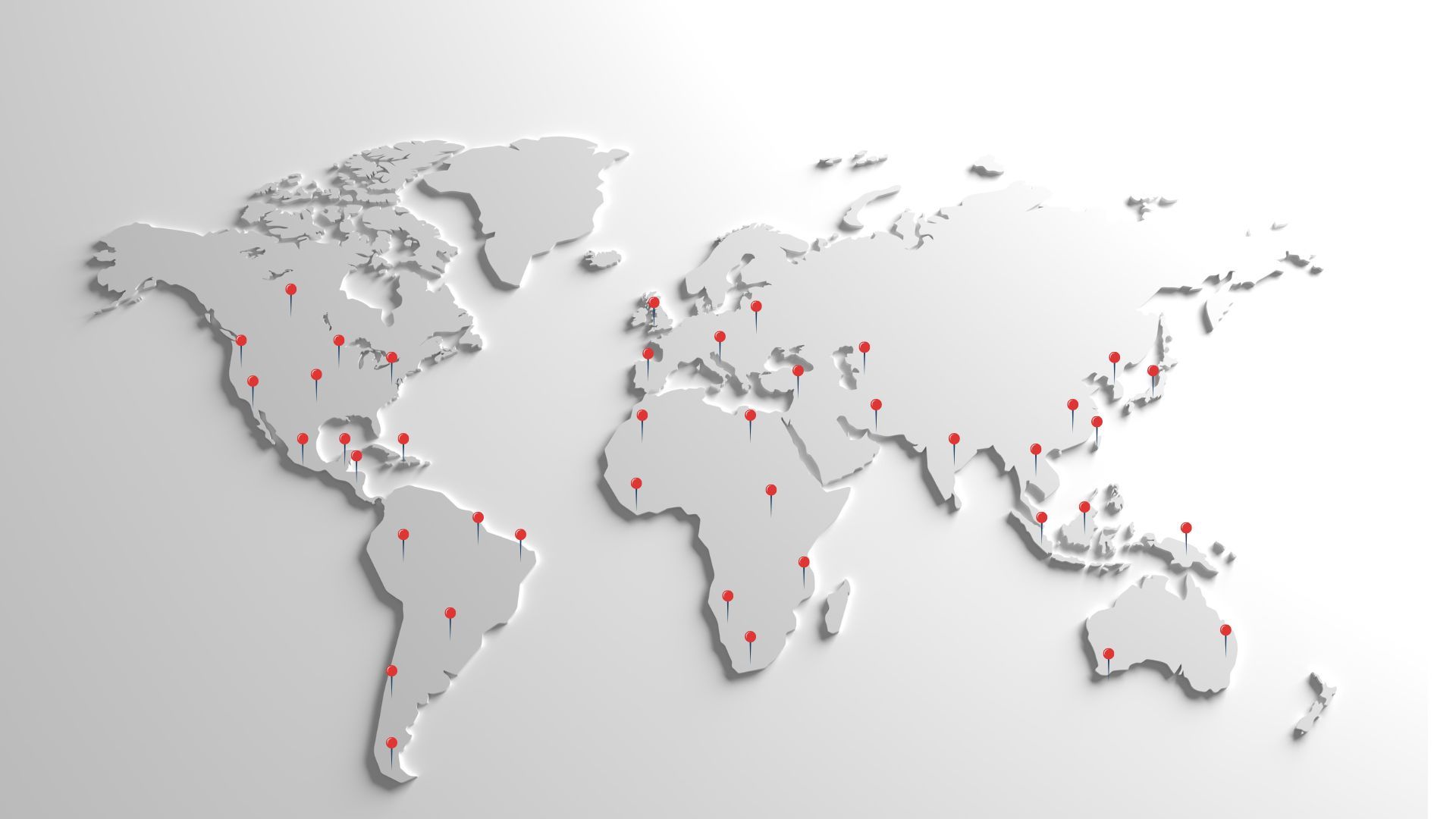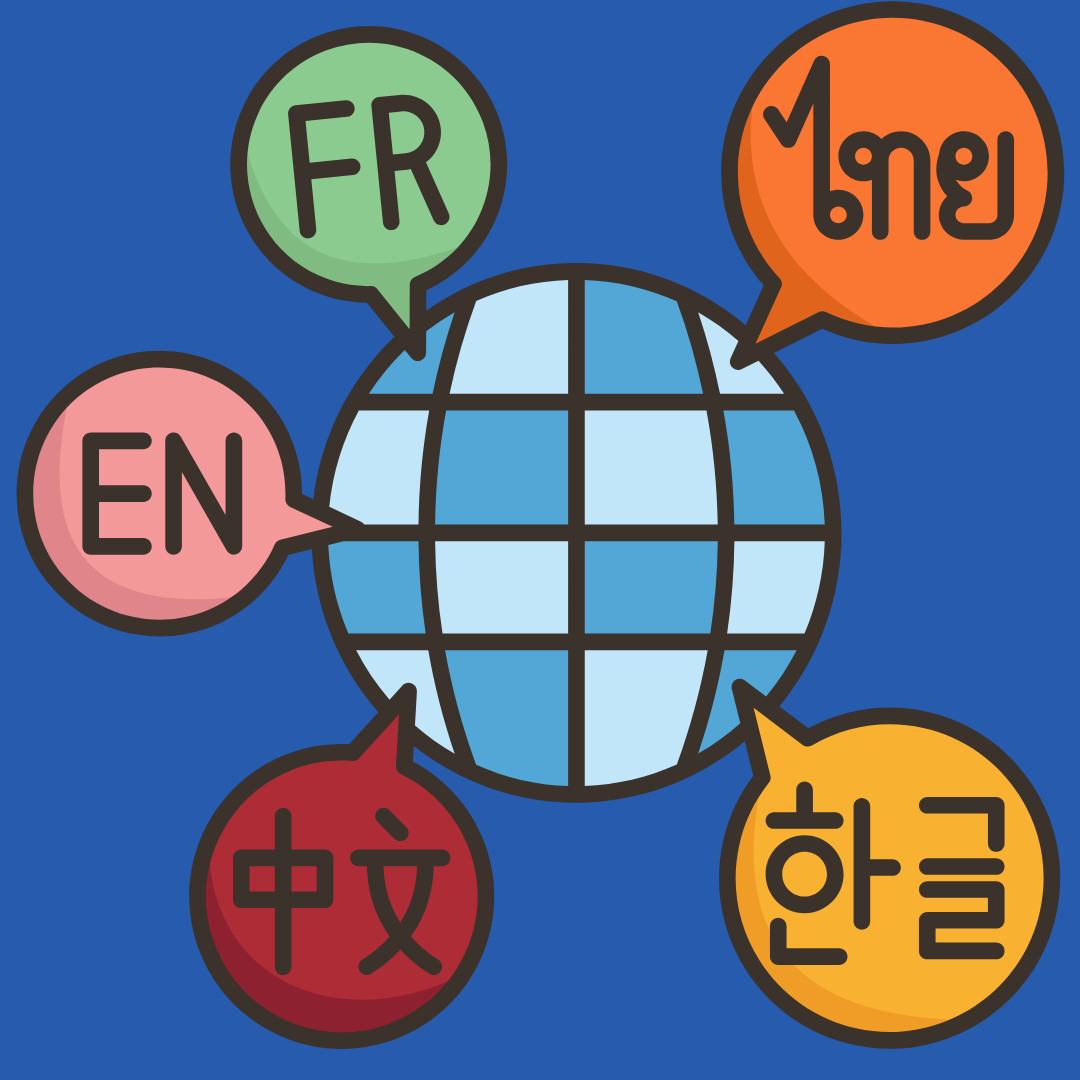Keep up with the latest news and updates on doing globally-minded business in a global world.

As artificial intelligence continues to evolve, businesses increasingly turn to AI-powered translation tools to bridge language barriers. While Google Translate remains a popular option, the future of AI translations is much broader, with advancements promising greater efficiency and accuracy. However, despite these improvements, AI translations still present risks that businesses must consider. Professional translation services remain essential for business communication. Confidentiality Concerns in AI Translation One of the biggest challenges with AI-driven translation tools is data security. Businesses must be cautious about where their sensitive information is processed. Many free or cloud-based AI tools store data to refine their algorithms, raising concerns about confidentiality and compliance. Why Go Pro: Professional translation services implement strict security protocols, ensuring that sensitive business data is handled securely. With encryption, non-disclosure agreements, and human oversight, professional translators provide a level of confidentiality that AI tools cannot yet guarantee. AI Accuracy vs. Business Needs AI translations are improving, but accuracy remains a major concern, especially in industries requiring precise language, such as legal, medical, and technical fields. AI models struggle with context, cultural nuances, and idiomatic expressions, leading to translations that may be technically correct but miss the intended meaning. Why Go Pro: Human translators bring contextual understanding and industry expertise that AI lacks. Professional translation services ensure that documents, contracts, and marketing materials convey the right message without errors that could lead to miscommunication or legal issues. The Role of Human Expertise in AI-Assisted Translation AI tools like Google Translate, DeepL, and Microsoft Translator are increasingly using machine learning to improve their output. While these technologies are impressive, they still require human oversight to correct errors and adapt translations for specific audiences. Why Go Pro: Many professional translation services now use AI-assisted workflows, combining the speed of AI with human expertise. This hybrid approach ensures efficiency while maintaining accuracy, cultural sensitivity, and brand consistency. Formatting and Business Presentation Challenges Business translations often require more than just words, they need to maintain formatting, branding, and layout consistency. AI translation tools do not preserve document structures, leading to additional time-consuming revisions. Why Go Pro: Professional translation services provide ready-to-use documents with original formatting intact, saving businesses time and effort in post-translation adjustments. The Future: AI as a Tool, Not a Replacement The future of AI translations is bright, with advancements in neural machine translation (NMT), real-time voice interpretation, and AI-powered localization. However, AI will not replace human translators—it will serve as a tool to enhance their efficiency. Why Go Pro: Businesses that integrate AI-assisted translation with human expertise will achieve the best results. A professional translation partner ensures that AI is used effectively while maintaining the accuracy, confidentiality, and cultural nuance that only human linguists can provide. Partner with AAA Translation At AAA Translation, we leverage both cutting-edge AI tools and expert human translators to deliver precise, culturally relevant translations. We understand the appeal of AI translation services - quick, cost-effective, and increasingly sophisticated. However, even the best AI tools can struggle with nuance, industry-specific terminology, and cultural context, leading to errors that may impact clarity and professionalism. That’s where we come in. Our expert linguists can meet you halfway by providing thorough proofreading and refinement of your AI-translated documents, ensuring accuracy, consistency, and a natural flow that truly resonates with your audience. This hybrid approach allows you to leverage AI’s efficiency while maintaining the quality and precision that only human expertise can provide. While AI translation is evolving, human expertise remains critical for business communication. Partner with us to ensure your message is conveyed accurately, securely, and professionally, no matter the language.

Since 2012, AAA Translation has been truly honored to provide translation services for The Vatican. Multilingualism allows The Vatican to engage effectively in international relations, issue statements, and respond to global events in various languages. The Vatican, the world’s smallest independent city-state, is not only the spiritual center for over a billion Catholics but also a hub of linguistic diversity. Despite its diminutive size—just 44 hectares—the Vatican plays a significant global role, requiring a multilingual approach to its communications, publications, and diplomacy. Languages in Vatican Publications The Vatican publishes in numerous foreign languages to reach its global audience. The official newspaper, L'Osservatore Romano, is published in several editions, including: Italian (the daily edition) English French Spanish German Portuguese Polish Malayalam (for the Indian Catholic community) In addition, various official documents, such as papal encyclicals, apostolic exhortations, and catechisms, are translated into dozens of other languages depending on the significance and intended reach of the content. For example, major Church documents may be published in over 30 languages , covering Latin America, Africa, Asia, and Europe. The Vatican also maintains a Latin version of key documents and liturgical texts, as Latin remains the Church’s official language. Languages Spoken by Pope Leo XIV Pope Leo XIV speaks English, Spanish, French, Italian and Portuguese, and can read Latin and German, according to the National Catholic Reporter . Why Language Matters in the Vatican The Vatican’s commitment to linguistic diversity is not just about communication; it's also symbolic of the Church’s universality. Efforts to translate papal messages and theological texts into many languages underscore the Vatican's desire to reach all faithful, regardless of geography or native language. Moreover, Vatican Radio and the Vatican News portal broadcast and publish content in over 40 languages , including Swahili, Chinese, Arabic, and Tagalog. This extensive multilingual media presence ensures that the Pope’s voice and the Church’s teachings resonate in even the most remote corners of the world. Learning foreign languages empowers us to connect with the world, embrace diverse cultures, and unlock endless possibilities beyond borders.

May 2025 marks an important milestone for AAA Translation, as we celebrate 25 years in business. As I celebrate this milestone, I am filled with excitement for the future. The world is changing, and with it, new opportunities are arising. The next chapter will be about innovation and continuing to create value on a global scale.
Earlier Articles:

Language Translation Services are essential in the food industry. For food businesses expanding into international markets or managing diverse workforces, professional language services offer indispensable solutions. AAA Translation provides strategic services to help food businesses with clear messaging that is culturally relevant and impactful.
Summer vacations are often associated with beach holidays and road trips, but there are countless unique ways to enjoy this season around the globe. Each culture brings its own flavor to summer, creating memorable experiences that go beyond the typical. Take a journey to discover some of the most unique summer vacation customs from various parts of the world. 1. Finland: Midnight Sun and Midsummer Festivals In Finland, the summer solstice, known as Juhannus, is a major celebration. The phenomenon of the Midnight Sun, where the sun doesn’t set, provides endless daylight for festivities. Finns typically escape to their summer cottages by lakes, light bonfires, and enjoy sauna sessions. Juhannus is marked by a mix of relaxation and revelry, with traditional foods, folk dances, and time spent in nature. 2. Japan: Hanabi Taikai (Fireworks Festivals) Japan's summer nights are lit up by spectacular fireworks festivals known as Hanabi Taikai. These events are deeply ingrained in Japanese culture, with some of the most famous festivals taking place in Tokyo, Osaka, and along riversides. Locals and tourists dress in traditional yukata (light summer kimono), enjoy street food from various stalls, and gather to watch the intricate and colorful fireworks displays. 3. Italy: Ferragosto Ferragosto, celebrated on August 15th, is a national holiday in Italy with ancient roots dating back to Roman times. This holiday marks the peak of the summer vacation season. Italians often head to the beach, mountains, or countryside to escape the heat. Many businesses close for the day, and cities like Rome and Florence empty out as residents and tourists alike take part in feasts, fireworks, and outdoor activities. 4. Iceland: Camping and Exploring Under the Midnight Sun In Iceland, the Midnight Sun provides almost 24 hours of daylight, allowing for endless exploration. Camping in lava fields, hiking on glaciers, and soaking in geothermal hot springs are popular summer activities. The long days make it possible to pack in many adventures without worrying about nightfall, creating a magical and unique vacation experience. 5. Sweden: Midsommar Celebrations Sweden’s Midsommar is one of the most important holidays, celebrated around the summer solstice. Swedes gather with family and friends to raise and dance around the maypole, adorn themselves with flower crowns, and enjoy a traditional feast of pickled herring, new potatoes, and strawberries. It’s a time of joy, music, and connecting with nature, often spent in the countryside or by the water. 6. Peru: Inti Raymi (Festival of the Sun) In Peru, the ancient Incan festival of Inti Raymi, celebrated on June 24th, marks the winter solstice in the Southern Hemisphere. The city of Cusco becomes a vibrant stage for reenactments, traditional music, and dance performances. Visitors from around the world join in this colorful celebration to honor the sun god, Inti. The event culminates at the historic Sacsayhuamán fortress with elaborate rituals and displays. 7. Mongolia: Naadam Festival Mongolia’s Naadam Festival, held in July, is a centuries-old celebration featuring "the three manly games": wrestling, horse racing, and archery. This national holiday is a unique blend of sports competition and cultural festivities. Nomadic families from across the country gather to participate and celebrate, offering visitors a chance to experience Mongolian traditions, hospitality, and the vast beauty of the steppes. 8. India: Monsoon Magic in Kerala While summer in India can be extremely hot, the monsoon season brings a refreshing change. In Kerala, the arrival of the monsoon transforms the landscape into a lush, green paradise. Travelers can enjoy houseboat rides through the backwaters, Ayurvedic treatments, and the festival of Onam, which features elaborate feasts, traditional boat races, and cultural performances, celebrating the harvest and the homecoming of the mythical King Mahabali. 9. Scotland: Highland Games The Scottish Highland Games, held from spring to autumn, are a highlight of the summer. These games, rooted in Celtic tradition, feature unique events such as caber tossing, tug-of-war, and hammer throwing. Attending the Highland Games allows visitors to experience traditional Scottish sports, dance, and music amidst the stunning landscapes of the Scottish Highlands. Conclusion Summer vacation customs around the world offer a vibrant tapestry of cultural diversity and traditions. From the endless daylight of Iceland’s Midnight Sun to the colorful festivities of Peru’s Inti Raymi, these unique experiences provide a fresh perspective on how to enjoy the summer season. Exploring these customs not only enriches our understanding of different cultures but also adds unforgettable moments to our travel diaries. So, this summer, consider stepping off the beaten path to immerse yourself in one of these extraordinary traditions.
In an increasingly interconnected world, businesses aiming for global expansion must prioritize localization to resonate with diverse audiences. Localization, the process of adapting products or services to suit specific regions or cultures, is not merely a translation endeavor but a strategic goal. This white paper explores the importance of proper localization and identifies potential pitfalls to avoid in achieving effective global engagement. Cultural Relevance: Localization ensures cultural sensitivity by aligning content with local norms, values, and preferences. It transcends language barriers, resonating with audiences on a deeper level and fostering genuine connections. Neglecting cultural nuances can lead to misunderstandings, alienation, or even offense, hindering market entry and reputation. Enhanced User Experience: Properly localized products provide a seamless user experience tailored to regional expectations. From user interfaces to customer support, localized content enhances usability, increasing customer satisfaction and loyalty. Failure to adapt can result in frustration, diminished user adoption, and loss of competitive edge in global markets. Market Access: Effective localization facilitates market access by addressing unique market dynamics and consumer behaviors. It enables businesses to capitalize on local trends, preferences, and purchasing habits, thus gaining a competitive advantage. Without localized strategies, businesses risk being overshadowed by competitors who resonate more deeply with their target audiences. Brand Perception: Localization influences brand perception, shaping how a company is perceived in different markets. By demonstrating commitment to local communities through culturally relevant content, businesses build trust and credibility. Conversely, poor localization can damage brand reputation, eroding trust and hindering long-term growth prospects. Legal and Regulatory Compliance: Localization ensures compliance with local laws, regulations, and standards, mitigating legal risks and liabilities. From data privacy to product labeling, adherence to local requirements is essential for market entry and sustainability. Neglecting compliance can result in costly legal disputes, fines, or even market expulsion. Pitfalls to Avoid in Localization: Overreliance on Machine Translation: Relying solely on machine translation without human oversight can lead to inaccuracies, awkward phrasing, and cultural insensitivity. While automation expedites the process, human linguists and cultural experts are indispensable for ensuring quality and context accuracy. Ignoring Cultural Nuances: Failing to understand and incorporate cultural nuances can result in misinterpretation or offense. Colors, symbols, gestures, and humor vary widely across cultures and must be carefully considered in localization efforts to avoid unintended consequences. Inconsistent Brand Voice: Inconsistent brand voice across regions can dilute brand identity and confuse consumers. Maintaining a cohesive brand narrative while adapting to local contexts requires strategic planning and coordination to ensure brand integrity. Underestimating Technical Challenges: Technical challenges, such as software compatibility, encoding issues, and platform limitations, can impede effective localization efforts. Thorough testing and collaboration between localization teams and technical experts are essential to overcome these obstacles. Conclusion: Proper localization is imperative for global success, enabling businesses to forge meaningful connections, enhance user experiences, penetrate new markets, and safeguard brand reputation. However, navigating the pitfalls of localization requires careful consideration of cultural, linguistic, technical, and regulatory factors. By prioritizing effective localization strategies and avoiding common pitfalls, businesses can unlock the full potential of global markets and drive sustainable growth. Experience AAA Translation’s world-class services tailored to your global engagement needs. Trusted by top companies worldwide across industries covering manufacturing, travel, finance, healthcare, and life sciences, we are the premier choice for professional translations. www.AAATranslation.com
During online multilingual meetings, observing proper speaker etiquette is pivotal to fostering a successful and seamless experience. Interpreters serve as conduits, helping communication among cultural and linguistic diversity. Outlined below are essential tips aimed for speakers to effectively convey their message while collaborating with interpreters: Ensure a Stable Internet Connection: Use hard-wired ethernet connections for enhanced stability. Wi-Fi or hotspot connections are ill-suited for meetings requiring interpretation due to susceptibility to interference. Opt for High-Quality Microphones: Using plugged-in microphones of superior quality is imperative. Built-in microphones on devices often do not meet the standards necessary for interpreters to accurately convey your message. Cultivate a Controlled Environment: Mitigate external distractions and noise sources. Disable push notifications on all devices to keep focus during the meeting. Position Your Camera at Eye Level: Enable interpreters to clearly see your facial expressions and body language. Adjust Lighting Conditions: Ensure adequate lighting, preferably natural, to optimize visibility. Position yourself facing the primary light source for best clarity. Share Documents and Presentations in Advance: Enhance interpreter performance by providing materials beforehand, helping seamless integration of your content into their interpretation. Conduct Rehearsals with Interpreters: Schedule preparatory sessions to familiarize interpreters with your speaking style and address any technical or linguistic challenges prior to the main event. Maintain Exclusive Use of Speaker Microphones: Minimize disruptions by ensuring only the speaker's microphone is active, alleviating overlapping voices and outside noise that may hamper interpretation. Specify Language Usage: Clearly communicate the language you will be using, enabling participants to select the proper audio channel for best comprehension. Exercise Caution with Pre-recorded Content: When presenting pre-recorded videos, refrain from altering the playback speed, as this may compromise the interpretation quality. By adhering to these guidelines, speakers can effectively collaborate with interpreters, fostering an environment conducive to meaningful cross-cultural communication and engagement.
In an increasingly interconnected global marketplace, businesses are continually seeking opportunities to expand their reach and set up a presence on the international stage. Trade shows serve as pivotal platforms for networking, displaying products, and forging lucrative partnerships. However, the success of a company at trade shows is contingent upon its ability to communicate effectively with diverse audiences. This white paper clarifies the importance of localizing materials for trade shows and how this strategic approach can elevate a company's global presence. Read More
Cultural Sensitivity and Inclusive Localization: Localization efforts are becoming more attuned to cultural nuances, with a focus on creating content that is not only linguistically accurate but also culturally sensitive and inclusive. Different cultures may have varying perspectives on gender roles and expressions. Translators need to be sensitive to these cultural nuances to accurately convey the intended meaning while respecting cultural differences.
Whether you have German heritage or not, you’re likely to get caught up in the fall celebrations of Germany’s Oktoberfest. A little of its history and current German practices – To Know Before You Go – will help you to get the most out of your celebration. The Beginnings of Oktoberfest According to The German Way , the original Das Oktoberfest celebrated the marriage between Princess Teresa (Therese) of Bavaria (1792-1854) and Prince Ludwig I (later king of Bavaria) on October 12, 1810. Throughout the following week, townspeople enjoyed grand banquets, concerts, parties, balls, and a horse race. Due to its success, the Bavarian royal family held another race the following year, which became an annual Oktoberfest tradition. The royal family passed the management of the event to the Munich city fathers to create a widespread community celebration whose delights spread to neighboring country sides and expanded to two weeks or more. The Fest continued with great popularity through the years, including the featured horse race as part of the activities through 1960. Only wars – Napoleonic and World Wars – and disease – cholera, Spanish flu, and COVID-19 – have stopped the people from celebrating fall, harvest, family, food, and … beer! Oktoberfest Today The 188 th event is taking place on the Theresienwiese in Munich from 16 September to 3 October. Held on 85 acres, Das Oktoberfest is the largest folk festival in the world, set to attract nearly 5 million people this year. Make no mistake, while this is a celebration, it is also a business: nearly 900 companies have applied to be part of Oktoberfest 2023. 474 businesses were approved this year, including 140 from the catering trade, 138 fairground businesses, 196 market traders and several service businesses. There will be 39 businesses at the Oidn Wiesn, 14 of which are gastronomic, 23 showmen's shops and two market traders. Last year, 5.6 million liters of beer was served, all figures according to the official Oktoberfest website . This year, a liter of beer will cost between €12.60 and €14.90, resulting in an estimated €77M in sales. As the home page describes,, each Oktoberfest “begins with a parade led by the Munich mayor and the ‘Münchner Kindl’ (Munich child, the city’s mascot, usually portrayed by a girl). Then comes the ceremonial tapping of the first beer keg at 12 noon. That honor goes to the mayor, who shouts out the traditional cry of ‘O’zapft is!’ (‘It is tapped!’) Only then can the start flowing and the festivities begin.” The Oktoberfest grounds, which resemble a state fair, are enclosed by a fence and offer security through Die Polizei (police). Dozens of rides and attractions fill the grounds. Admission to the area is free; rides, table reservations, food and beverages are available for purchase. AAA Translation has helped many Americans who are planning to visit the Oktoberfest to fill out their applications to reserve a table at one of the many beer tents, as those are only provided in German. Visitors can easily spend multiple days at Das Oktoberfest with unique happenings every day. Organizers continue to balance tradition and enhancing the festival with new and interesting attractions. For example, this year, Paulaner Beer opted to serve all-organic hens at its Paulaner Festzelt, said msn.com . Roasted chicken has been among the most popular festival foods, but the organic hen cost 20.50 euros ($22), about 50% more than the nonorganic hen. Additional food and drink abound at various Festzelte or Beer Festival Tents, which are more like buildings. Visitors may buy ox roasted on a revolving spit, famous “fish on a stick” or Steckerlfisch , pork Bratwurst , Knödel (Bavarian dumplings), or cake and pastries. Two popular beer tents are Hofbräu-Festzelt , run by the famous Hofbräuhaus and Löwenbräu-Festzelt , the “lion’s brew” tent, displaying a large lion above the entrance to welcome all – specifically soccer fans. Three other tents of note are: Wiesn-Festzelt is the largest and oldest tent. Rich with history, it features hearty brass music and dance floors for polka-ing and beer from stone mugs. Hacker-Festzelt is warm and welcoming, featuring many familiar scenes from Munich daily living in the city. Marstall Festzelt honors the equestrian roots of the Oktoberfest, following in the “gallop-prints” of the Hippodrome. The Marstall, a court riding-school built by Leo von Klenze, gathered aristocratic equestrians 200 years ago. Oktoberfest Throughout Germany and Beyond For those who would like to experience a true German Oktoberfest outside Munich, try: The Cannstatter Volksfest ( Cannstatter Wasen ) in Stuttgart is the second largest beer festival and fair in Germany, with about 4.5 million annual visitors. It starts a week later than Oktoberfest. Also consider the Cranger Kirmes in Herne, North Rhine-Westphalia; the Rheinkirmes in Düsseldorf, and the Freimarkt in Bremen in northern Germany. An estimated 100 Oktoberfest events happen around the world, happening in areas as far-reaching as Yokohama , Japan ; Windhoek, Namibia ; Melbourne , Australia ; Cordoba, Argentina ; and Blumenau, Santa Catarina, Brazil, says Nice News . Wherever you travel, k eep in mind AAA Translation for culture and localization questions to best enjoy your cultural interactions.
Athletic competition has been universally appreciated around the world and throughout time. Since early recorded history, audience members have been entertained by events such as the Aztec’s Ullamaliztli in Mexico and the long-distance races of the Olympic Games in Greece. These types of sport laid the groundwork for modern matches, like the recent Women’s World Cup soccer games in Australia. Today’s audiences are drawn to the drama, athletic prowess, and excitement surrounding the soccer game – before the players hit the field, as they play, and after the countdown clock finishes. In the finals of the 2023 Women’s World Cup, Spain opposed England in an all-Euro match. Both teams faced challenges ahead of the game: Spain dealt with the team’s protests against their head coach and the Royal Spanish Football Federation (RFEF); then it lost several key players who didn’t advance to the last game after qualifying to play. England too, was missing principal players when the Lionesses’ all-time leading goal scorer and the starring midfielder announced their retirements. However, the match held promise with extraordinary returning talent on both sides. During the game, dashing plays – such as Spain’s single goal and England’s near-goal – kept the interest of the fans high, while they lamented the significant injuries to players in both uniforms. Post-game, the euphoria on Spain’s side held controversy with the unanticipated kiss from RFEF president Luis Rubiales on midfielder Jennifer Hermoso. Meantime, England’s Manager Sarina Wiegman showed obvious misery at her second consecutive World Cup final loss. The entertainment value of games like these has increased the popularity of soccer worldwide, bringing with it the demand for materials to learn this game, teach it, and coach teams. Players and coaches find it critical to learn secrets of successful athletes and staff by studying their performance careers, especially in sports manuals and other books. For more than 20 years, AAA Translation has been translating hundreds of sports books for Meyer & Meyer Sport Germany. The topics of these range from fencing to yoga, yet the majority have been about soccer. These books are intended for those with casual interest in the game as well as players, trainers, and coaching staff wanting to shape high-achieving players and teams. One example of our book translation projects is Pep Guardiola: The Philosophy That Changed The Game, found on amazon.com here . Since the inception of the brand-new St. Louis City Soccer Club (STL CITY SC), AAA Translation has been translating editorial articles for the club and provided German interpreting services when hosting Bayer Leverkusen for CITYPARK'S Historic Inaugural Event in 2022. Sharing the enjoyment of this game and other sports has been part of the mission of our company, as it unites the world’s citizens. If you or your company are interested in translation of materials related to sports or sporting events, we would be glad to assist you.
The $1.03 billion in ticket sales* at the global box office confirms that the new Barbie movie has done a lot of things right to please its audiences. Higher ticket sales in the United States were anticipated because of the multi-generational appeal of the 60 + -year-old toy, but to the surprise of some movie critics, it has generated mass interest worldwide. Several of the movie’s themes translated cross-culturally, such as the role of men v. women in the modern world – as well as “ordinary,” real-life struggles women have – resulting in high ticket sales in Mexico, China, Australia, and the U.K. One item that did not translate well, however, was a seemingly avoidable one – and one likely remedied with video-editing. The offensive film clips caught the attention of the Vietnamese government, specifically the head of the Department of Cinema. This organization oversees licensing and censoring of foreign films. The administrators were not offended by the references to the objectification of Barbie, Ken's role or the inclusion of Asian actors, feminist themes or that the 'Ordinary' Barbie in Vietnam may look different than what was presented in Barbieland. Instead, it was something visually simpler with more complex interpretation. Their statement, presented in Vietnam's state-run Tuoi Tre newspaper, said that the Barbie movie would not be released – in fact was barred – because of this: “We do not grant license for the American movie 'Barbie' to release in Vietnam because it contains the offending image of the nine-dash line,” says CBS news . Within the movie’s plotline, Barbieland is separated from real-life land of the rest of the world. On the map the audience sees repeatedly water separates various countries and islands, with dotted lines indicating some borders between them. In this fictional film, the countries are not drawn to shape or scale, yet they were close enough to have the censors take notice and raise their sensitivities. The Department of Cinema was referencing “the nine-dash line” which China has promoted as a delineation of its territory but contested by Vietnam, who claims more of these lands in the South China Sea are its territory. This line is not officially drawn, but China presents it as “Off the coast of China's Hainan Island, and runs close to the coast of Vietnam, deep into the South China Sea, enclosing the Spratly Islands. North of Borneo, near the coasts of Malaysia and Brunei, the line turns and runs to the west of the Philippines and ends just to the south of Taiwan,” defines CBS news. The sensitivity of this border conflict is well-justified, with many decades of dispute between the countries, and not to be taken lightly. Indeed, this is a prime example where a localization firm could have been consulted to use their knowledge of localization and cultural nuances to avoid provoking ill will. In the case of these maps, had the image been drawn another way, it may have easily passed the censors and enabled more interested movie-goers the chance to enjoy Barbie’s iconic pink world, her friends, and goodwill. With international releases, using cultural experts should be a regular step in that process of release to avoid challenges like these. *According to official Warner Bros. estimates as reported by Barrons .
If you’ve ever wondered why you have trouble reaching your international colleagues, check your calendars. With different paid vacation time, it may seem that some professionals are out of the office more than others. Knowing more about their policies can help you understand when the best time is to schedule your communications. The length of total paid leave that full-time employees are legally entitled to varies country to country. Several policies are described here, including the minimum amounts defined by government labor laws, with some employer-specific requirements. According to the 2023 figures on https://en.wikipedia.org/wiki/List_of_minimum_annual_leave_by_country , South Koreans enjoy the highest number of paid days, at 30-40 annually. Elsewhere in Asia, Japan’s policy requires its workers to begiven 26-36 paid days yearly, depending on years of service and seniority. China has a range that varies between 16-26 for different industries. Singapore offers between 18-25 days. India’s workers enjoy 35 paid days per year. In Pakistan, employees (except contract and temporary workers) receive a minimum 14 days of paid annual leave after one year – which ranks among the lowest in the world. Across Europe, the majority of countries guarantee workers a minimum of 20 days off every year. Spain provides 22 days guaranteed (and up to 36) days annually. Germany is slightly lower at 30 vacation days per year, while France offers 5 weeks. Within the United Kingdom, England, Scotland, Wales, and Northern Ireland mandate 5.6 weeks off annually. Denmark offers 25 days. In Scandinavia, Swedes experience 34 days of paid annual leave; Norwegians experience 35 days and Finns, 36 days. In most provinces of Canada, employees receive a minimum of 2 weeks of vacation for every year of employment. In South America, Brazil offers 26-34 days. In Argentina, paid leave ranges from 14-35 days based on time with the company. Australia and New Zealand have generous policies as well, offering 30 and 32 days, respectively. In South Africa, the policy is a little more complicated, entitling workers 21 consecutive days, or 1 day for every 17 days worked, or 1 hour for every 17 hours worked. In Egypt, employees may take up to 21 days of paid leave but must wait 6 months before taking their first day off. [As a comparison, federal law in the United States does not require companies to provide any paid vacation time, though most employers to offer 10-14 days off per year as part of their compensation package.] Knowing some countries offer significant paid leave, be sure to build in extra time when anticipating responses from international colleagues. If you are curious about other countries’ paid leave policies, go to the List of Minimum Annual Leave by Country on Wikipedia .







